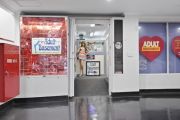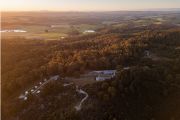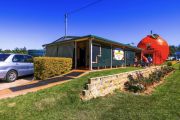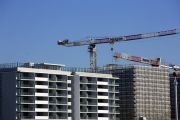
South Sydney records biggest rental growth for NSW
Demand for industrial space has put a rocket under land values and rents across the tightly-held South Sydney and western area precincts.
New infrastructure projects such as WestConnex are also contributing to the boom-time conditions. This has not been lost on developers such as Goodman and LOGOS among others who see the south and west as growth corridors.
The fight for space between office, residential and industrial developers has led South Sydney to record the highest level of growth over quarter two in NSW, according to Colliers International.
The group says there has typically been a disconnect between rental return and the price of land; while land values have been steadily climbing this is yet to be reflected in the price of rents, however this quarter rental growth is starting to come through.
Colliers International associate director of research, Sass J-Baleh, said land values for all Sydney sub-markets are still increasing rapidly, with a 5 per cent growth across the board recorded for the quarter, representing a year-on-year growth rate of 20 per cent
”Now, rental prices are finally starting to catch up; prime and secondary industrial buildings in South Sydney, which experienced no rental increase since 2016, have seen a 6 per cent and 12 per cent growth respectively this quarter,” Miss J-Baleh said.
“This reflects an average price of $187.50 per square metre for prime industrial assets and $156.30 per square metre for secondary.”
An example of the rental growth can be seen in the property on Botany Road in Rosebery, which recorded a 17 per cent growth in rent between 2016 and 2018.
Michael Crombie, national director, industrial at Colliers International, said there had been a loss of stock in South Sydney to a higher use including; residential upside, commercial conversion and compulsory government acquisitions. This tight market has pushed many tenants to markets further afield, such as Botany, Kingsgrove or Sutherland Shire.
“Therefore, when new stock does come on the market the lessor can, within reason, attribute any price when it comes to net rent as there is such limited choice; we are very much in a lessors’ market and this is accounting for the rental growth we are seeing now,” Mr Crombie said.
“Landowners are now finally seeing rental growth and buildings achieving a higher, or better use. All of Alexandria has a more flexible B6 zoning meaning there are many opportunities for landowners compared other areas – industrial, retail, commercial – and we believe this is where the future of South Sydney is heading.”
According to CBRE research, the impact from the M7 has been the improvement in utility the infrastructure has provided for industrial stock.
CBRE Research has identified the connection between drive time to motorways in Western Sydney and gross rents – with proximity commanding substantial rental premiums.
The firm says an analysis of 375 industrial leases since 2014 in the Western Sydney area revealed that for each additional minute drive to a motorway, occupiers pay on average $3 per square metre more – or a 2.1 per cent increase in rents.
”While the impact of WestConnex is unlikely to be as dramatic as that of the M7 as it is replacing far better roads than the M7 replaced, the intracity travel will be lower upon completion as access to the eastern city and the Sydney Airport from the west will be easier,’ CBRE research says.
”Supply in Sydney will shift further west, with developments to be larger given they won’t face the space constraints experienced in inner Sydney due to lower land values, even after the adjustment in pricing and more land availability.”











